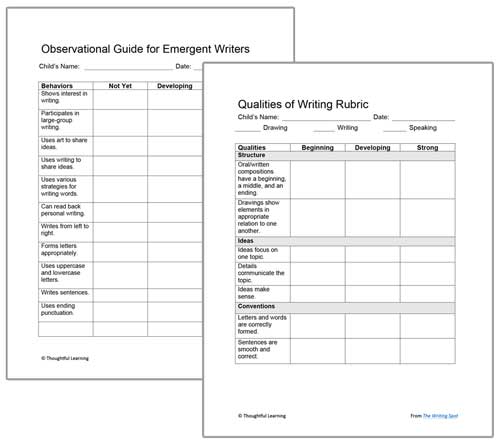Because your kindergartners will probably vary widely in their writing abilities, assessment works best on an individual basis. Whenever possible, do authentic assessments in the context of regular classroom activities.
You can assess students' writing both formatively (as they work, giving constructive feedback) and summatively (after they have completed a piece of writing, giving a score). In both types of evaluations, encourage students to see themselves as writers and continue to develop their writing abilities.
Formative Observations
Observations can be done at any time, using any method that works for you. What is important is that you write down what you observe about the learner. Some teachers use a tablet to jot notes about behaviors of individual children while they are writing. Others use a spiral notebook with a page for each child and add their observations at a specific time of the day or week. These observational notes help to identify how a child is doing and what kinds of help the child needs.
For a checklist geared to The Writing Spot, use the “Observational Guide for Emergent Writers” for each student several times throughout the school year. You can complete this document digitally or by printing it out and writing longhand.
Summative Evaluations
For more formal assessment of completed student assignments, you can use the “Qualities of Writing Rubric.” It addresses the three qualities that the state standards seek to develop through the early grades.
Use this rubric to assess individual writing projects to get a snapshot in time. You can also use this rubric to evaluate a student's overall writing portfolio, noting growth throughout the year. Make sure that the child's written work accompanies the completed rubric.
